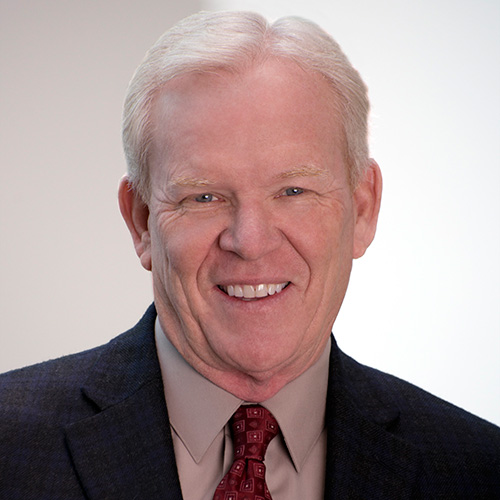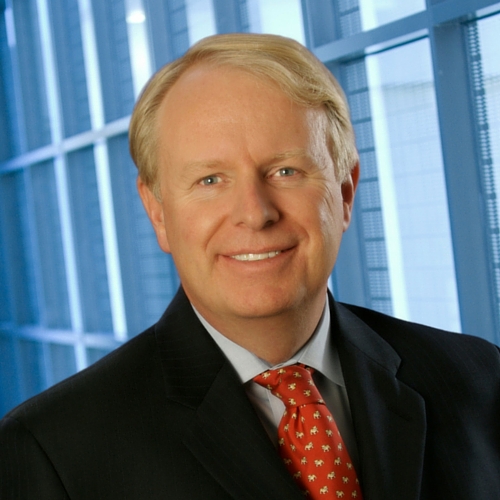Iconic Leader Allergan Has No Plans to Slow Down
CHICAGO—This year’s OIS Industry Tribute celebrated one of the best-known names in ophthalmology: Allergan. The Dublin-based company is one that “we rely on for innovation and growth and solving problems,” said William J. Link, PhD, who co-moderated the Tribute with William Meury, Allergan’s chief commercial officer.
Allergan was founded by pharmacist Gavin Herbert in 1948, when his chemist friend Stanley Bly approached him with an idea for an anti-allergy nose drop containing an antihistamine, neoantergan. Together they developed Allergan nasal drops, and reformulated the product as an eye drop to treat allergic conjunctivitis, making it the first antihistamine eye drop in the US.
By 1953, Allergan was producing its eye drops and formulating new products, including the first cortisone eye drop to treat allergic inflammation and the first ophthalmic steroid decongestant. In 1957, Herbert turned the company over to his son, Gavin Herbert, Jr., who led the firm until the 1990s, when David Pyott joined Allergan as president and CEO, and later served as chairman of the board and CEO. Under Mr. Pyott’s leadership, Allergan had eight FDA-approved products between 1998 and 2015, and the company’s annual sales jumped more than sevenfold to about $7 billion before being sold to Actavis in 2015.
In 1957, sales were about $250,000, recalled Herbert Jr., and “it took Allergan 10 years to get to the first $1 million mark,” he said. “We literally built the company the first five to six years utilizing direct mail. Of course, in those days you could actually mail prescription samples to the physician.” By the time the company went public in 1971, sales had reached $10 million and “we spent most of the money building a six-story building that most drug analysts thought was crazy.”
Calling his decision to “raid some Philadelphia companies” when he realized he “didn’t know a damn thing about the pharmaceutical business” one of the best decisions he made, Herbert Jr. continued to exponentially grow the company to $1.1 billion in sales by the time Pyott took over.
“What were some of the growth drivers that led to the compounded growth rate of around 16%?” Dr. Link asked.
Simply put, “ophthalmology at that time wasn’t anything that the big companies pursued, and so we had an opportunity to actually in-license compounds from companies like Upjohn and Pfizer that weren’t interested in ophthalmology, and we really focused hard on having the differentiated product,” Herbert Jr. said. The company’s first antiviral product was among the first to clear the regulatory hurdle showing efficacy, which propelled Allergan to the forefront of companies others wanted to work with to in-license compounds.
Commenting on his arrival at Allergan Pyott said, “I really didn’t feel that the tool shed was very full of great stuff,” but the company did have Tazorac for psoriasis and subsequently acne. He concentrated on rebuilding strong relationships between the sales and marketing teams and KOLs and day-to-day practitioners, and spent an equal amount of time building out the R&D arms.
A key to his success in ensuring the company continued to move at a fast pace was to bring people into his office if things got too slow “and they’d have to sit around my coffee table where there were only four chairs. If things got really tough, I’d wheel my chair over, but five chairs was the limit. People do not like standing in meetings,” he said.
For Meury, the decision to acquire Allergan was simple – “it was a once-in-a-career opportunity. The product line, the pipeline, and the relationships that Allergan over the years earned with customers” were unsurpassed.
“There’s not a company in the industry in any sector that has as strong, as legitimate, as serious, as genuine a commitment, as authentic a commitment to eye care that Allergan has,” he said.
Two decisions were “the easiest” during the acquisition period, Meury said. “Allergan was a branded house because of its commitment to eye care,” so keeping the Allergan name was simple. “The second easy decision related to employees and keeping the headquarters in Irvine. That was about maintaining talent and preserving everything that was built by the pioneers here.”
The future looks equally bright, Meury said. “You’ll see our product line evolve from a pharmaceutical product line to one that includes devices, procedures, implants, rings. Over the next five years, we’ll introduce almost 1,000 new technologies in dry eye, glaucoma, and retina.”
Contributed By Michelle Dalton, ELS
Presentation Audio:
Participants:

William J. Link, PhD
Prior to Versant, Bill was a general partner at Brentwood Venture Capital. He founded, and served as chairman and CEO of Chiron Vision. Chiron Vision was sold to Bausch and Lomb in 1997.

David Pyott
David E.I. Pyott joined Allergan on January 1, 1998. During his tenure, Mr. Pyott has transformed Allergan from a small eye care business to a global specialty pharmaceutical and medical device company with leadership positions in six medical specialties.

William Meury
Previously, Mr. Meury served as President, Branded Pharma since March 2015. He joined Actavis in July 2014 as Executive Vice President, Commercial, North American Brands.
